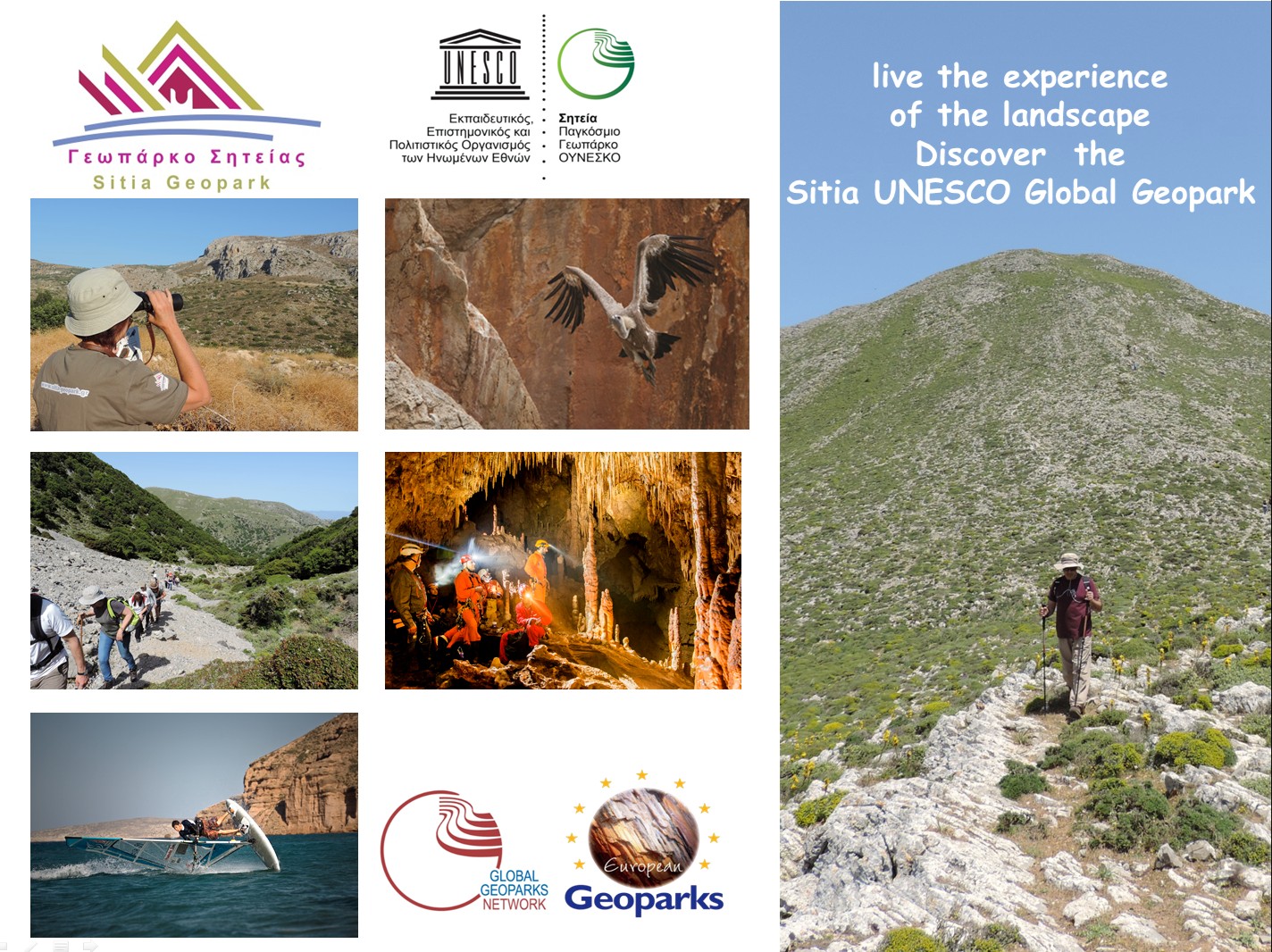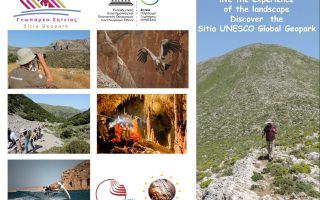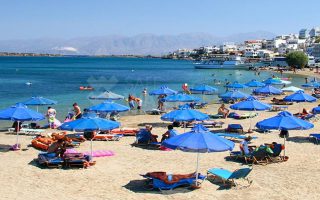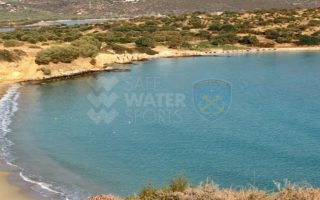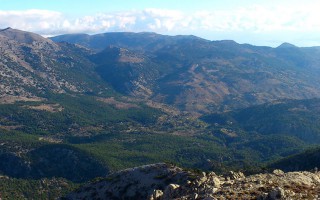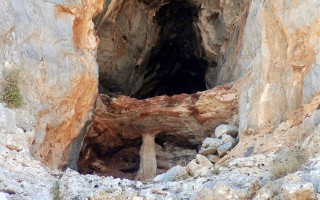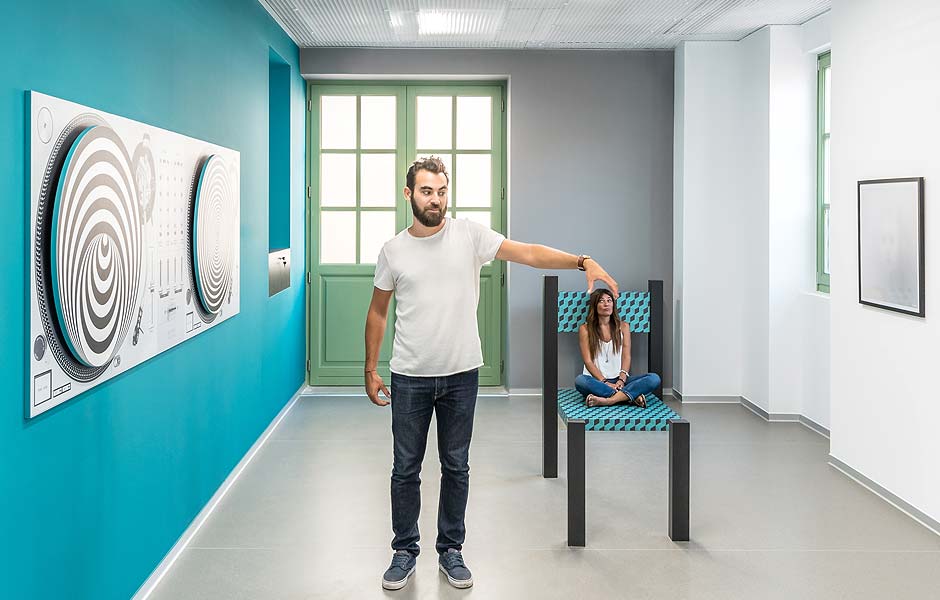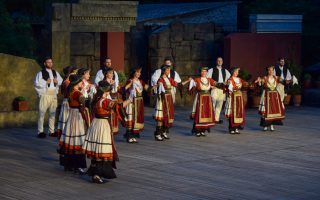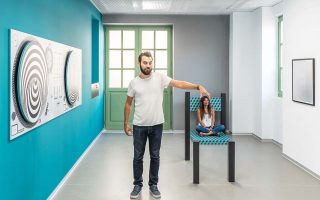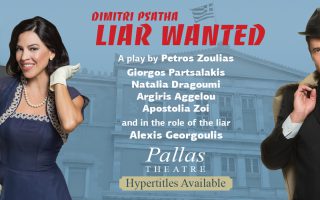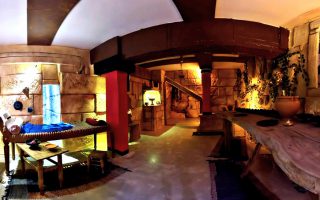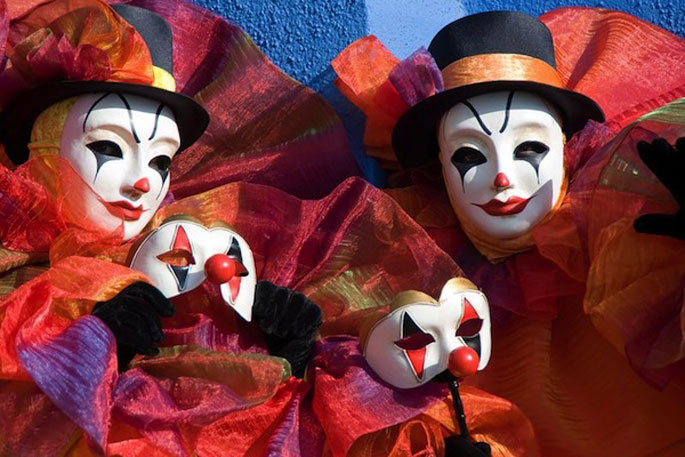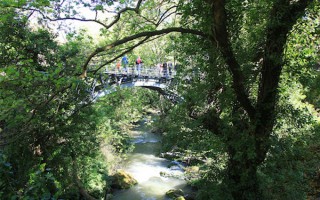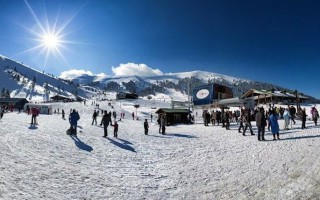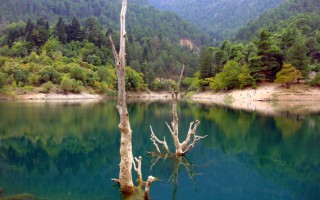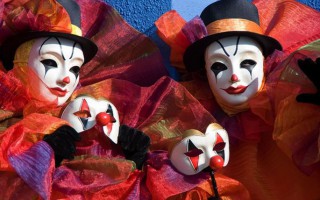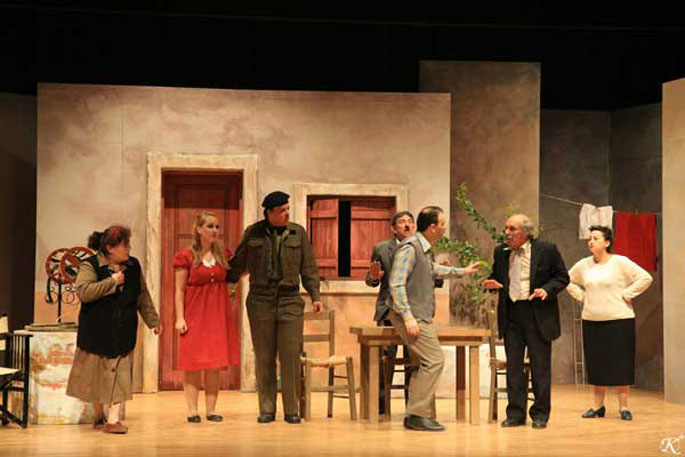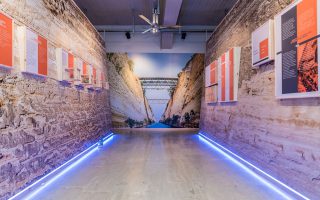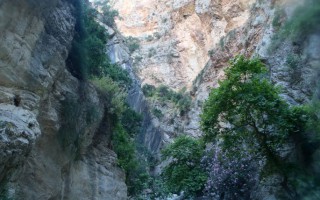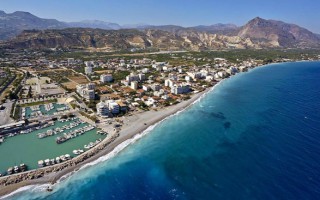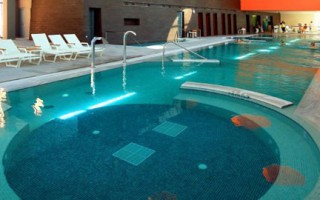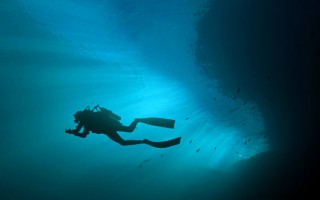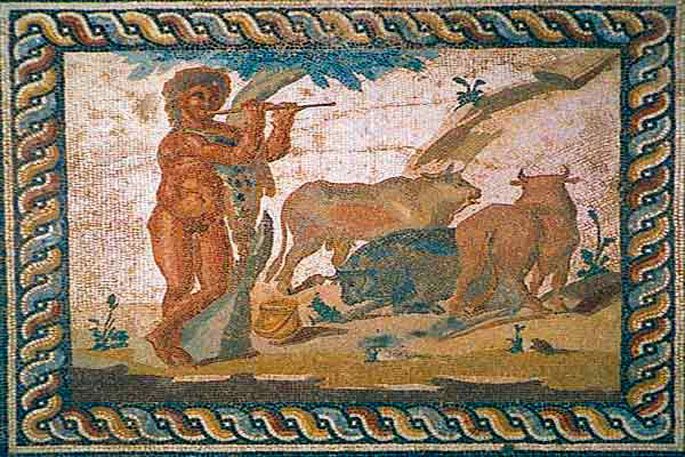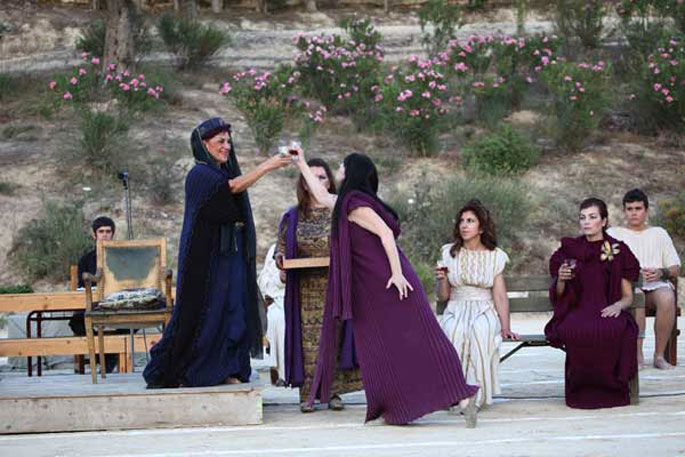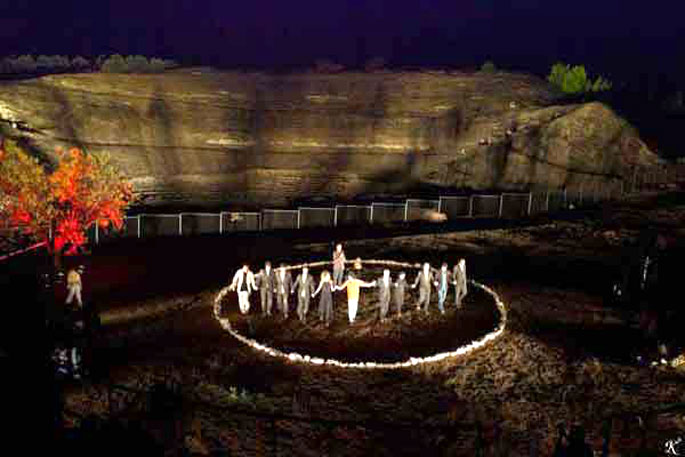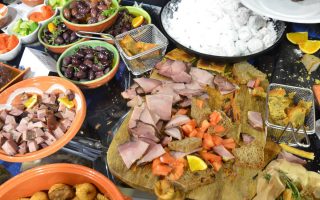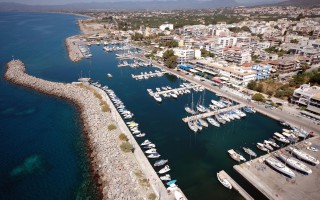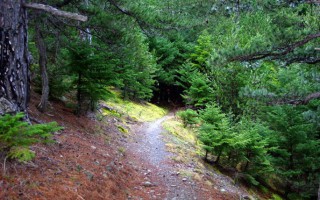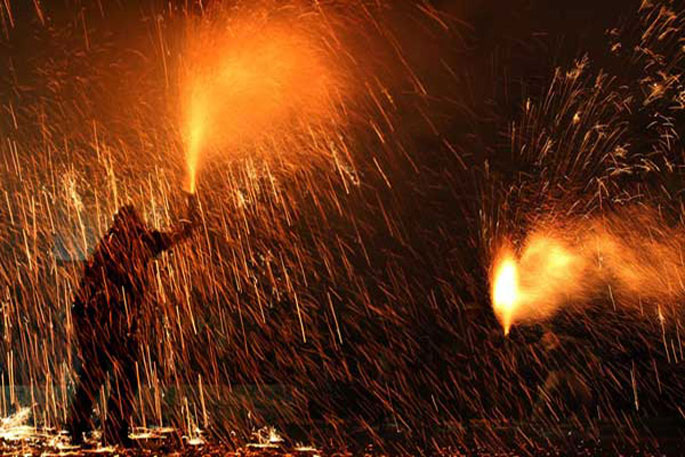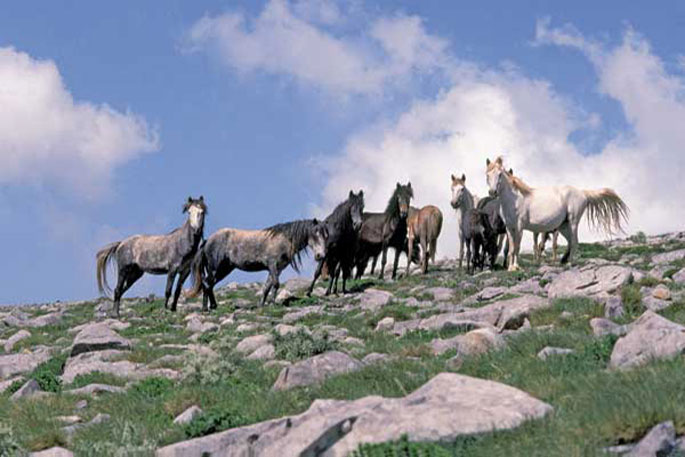When the Sitia region became a member of the UNESCO Geopark family, we had no idea just how much positive change this would bring!
This new aspect of tourism “Sitia Geopark”, is proving to be a considerable point of interest, especially in the alternative tourism market. The natural environment is no longer an obstacle for tourism development, on the contrary it is a great attraction for visitors.
We are seeing increasing interest in our Geopark from our customers, both individuals and tour operators from all over Europe. Sitia Geopark recently took part in online exhibitions’ of alternative tourism with Belgium, Poland, UK, Germany and France. We spoke with tour operators, journalists and travel writers. This type of tourism was something new to many of them and we detected great interest.
This is because our new venture is different and better than anything previously on offer!
Before our area was designated as a Geopark, the tourism product sold by the area of Sitia was Crete’, as promoted by all the island – Chania, Rethymno, Heraklion etc. Impossible competition!
“Sitia Geopark” is a totally new autonomous venture, found only in our area, fully compatible with alternative forms of tourism. It seems therefore that our region is slowly beginning to take a leading role, by fulfilling the needs of the modern tourist. The classic product of mass tourism and the trio of sun, sea and antiquities has completed its life cycle in these changing times and is naturally evolving into special and selective, ie alternative forms of tourism.
But what is “alternative tourism”?
And I quote the most appropriate description I can find: “Alternative tourism is the form of tourism, which is compatible with the social and environmental values of the region allowing both the local society and visitors to enjoy positive, worthwhile interaction and shared experiences. In other words, “alternative tourism” is the development that meets the needs both of the visitors and the region.
Three forms of alternative tourism have been developed and sold as package holidays to offices abroad in the last 12 years within the “Sitia Geopark” area.
The 1st alternative form of tourism is “walking tourism”. Over 25 marked routes are available with packages including accommodation, transportation, and guided tours for individual visitors as well as small groups of 6-15 people.
The 2nd form of alternative tourism – the largest alternative programme in our area for the last 18 years – is the sport of Windsurfing, which takes place on the beach of Kouremenos, Palekastro. The package includes accommodation in Palekastro area, transport and equipment (boat, sails) supplied by the 2 windsurfing stations located on the beach.
The 3rd form of alternative tourism is “cycling tourism”. Over 7 marked cycling routes are available within the Geopark area. The packages include accommodation in the area, transport and supply of city or mountain bike for individual customers or small groups of 6-15 people.
We are expecting a 4th very promising form of alternative tourism, “diving tourism”, to be added to our area with the creation of a diving park in the near future.
If asked today what the future tourism model for an area would be, I would say, 30% mass tourism and 70% alternative forms of tourism. The areas where mass tourism has prevailed show us that the above ratio is very difficult to achieve. To this end, we should consider the actual capacity of the area and we certainly need the support of government and the municipality.
Why choose 30% mass tourism? Mass tourism obviously controls the airlines and handles millions of people. Even though it creates many negatives in the host areas (for example Malia, Hersonissos, Faliraki, Rhodes, etc.), it also has 2 positives that we need in our area:
1) Direct flights from abroad to Sitia International Airport, offering easy and quick access to the destination and reduced package costs for customers.
2) New job opportunities in hotels/tourism for young people.
And why 70% alternative forms of tourism?
1) As far as revenue is concerned, one customer of alternative tourism equals
10 mass tourism customers.
2) It is more resistant to crises and pandemics. For example, regardless of the
Covid-19 pandemic, generally speaking small hotels, villas and apartments
in areas less developed developed continued to operate at a much lower
loss, whereas many large hotels and resorts remained closed in 2020 and
may well not open in 2021.
3) Not easily blackmailed by big tour operators.
4) Eco-friendly and local population-friendly as opposed to mass tourism.
5) The relationship between humans and the natural environment is restored.
6) Sustainable tourism development is created, by answering both the needs
of visitors and host areas, while protecting and increasing future
opportunities.
7) The local community profits the most as opposed to 2-3 people in the case
of mass tourism.
8) Repeat customers are created.
9) It attracts those in the high-end market with high standards, who would
never consider mass tourism.
This is dedicated to our future generations!
In no way do we want our actions of today to limit the ability of future generations to fulfill their own needs!
Kind regards
George Belibasakis
Web: https://www.sitia-geopark.gr/
TourMap: https://tours.nhmc.uoc.gr/geo/sitia/
If a picture is worth a thousand words, be sure that an illusion hides more than a million
 Enter the fascinating world of illusions which will trick your confidence in senses, but amaze you by doing it; the world that will confuse you completely, but also educate you… Visit us and you will be thrilled because nothing is what it seems, especially not HERE!
Enter the fascinating world of illusions which will trick your confidence in senses, but amaze you by doing it; the world that will confuse you completely, but also educate you… Visit us and you will be thrilled because nothing is what it seems, especially not HERE!
Are you ready for an even bigger, better, more fascinating adventure? Visit the Museum of Illusions in Athens; we offer you an intriguing visual, sensory and educational experience with a handful of new, unexplored illusions.
Athens, the main place of illusions!
 The Museum of Illusions in Athens brings you a space suitable both for social and entertaining tours into the world of illusions which has delighted all generations. It’s a perfect place for new experiences and fun with friends and family. Not only is it a place for children who adore coming, but also a place for parents, couples, grandmothers and grandfathers.
The Museum of Illusions in Athens brings you a space suitable both for social and entertaining tours into the world of illusions which has delighted all generations. It’s a perfect place for new experiences and fun with friends and family. Not only is it a place for children who adore coming, but also a place for parents, couples, grandmothers and grandfathers.
See what else we offer, you won’t believe your eyes!
 Be brave enough to jump in an illusion created by the Vortex Tunnel that will drive you crazy and make you believe you’re heavily struggling just to make a step forward through a rotating cylinder – on a surface so stable and flat! Be unbelievably rotated in the Upside Down Room, let yourself free in an Infinity room, resist the laws of gravity and size ratio, and make pictures of yourself in EVERY POSSIBLE POSE!
Be brave enough to jump in an illusion created by the Vortex Tunnel that will drive you crazy and make you believe you’re heavily struggling just to make a step forward through a rotating cylinder – on a surface so stable and flat! Be unbelievably rotated in the Upside Down Room, let yourself free in an Infinity room, resist the laws of gravity and size ratio, and make pictures of yourself in EVERY POSSIBLE POSE!
Deceive your eyes and entertain the mind!
Enjoy in our collection of holograms, look closer at every optical illusion and observe thoroughly each installation. They are such a brilliant, playful reminder that our assumptions about the world we perceive are often, nothing but a spectre of illusions.
The genuine heritage of showpieces will more certainly make your jaw drop!
Amusing and awesome tricks will teach you about vision, perception, the human brain and science so it will be easier to perceive why your eyes see things which your brain cannot understand. Make sure you visit our playroom with intriguing and educational games and puzzles. These brain bashers are definitely great fun but tend to be frustrating as well.
Come and explore the world of illusions. Experience the impossible. Be sure your camera is fully charged with memory space before you visit. By all means take your camera with you 😉
Patra, the capital of the prefecture of Achaea, is without doubt a city with great history and many interesting places for one to discover during a visit. However to the majority of the people the city is best known for its Carnival, which, is, admittedly, the biggest and most impressive carnival out of the dozens that are organized in various areas in Greece.
The Carnival of Patra began in the 19th century and has many western influences, which were transferred to the mainland via the Ionian islands. Nevertheless, the ancient roots of the Carnival cannot be disputed; it was connected with pagan traditions and rituals, especially the ecstatic celebrations in honour of Dionysus, who was the god of ecstasy and inebriation, and also of the rebirth of nature.
The Carnival opens every year on January 17, it reaches, however, its height during the final weekend of the Carnival, before Clean Monday, when the great parade also takes place. These days are filled with non-stop partying, vibrant colours, music, dancing and feasting until the small hours, with the participation of everyone, young and old, from all over the county.
Patra is a vibrant city year-round; during the Carvival, however, it becomes even more alive, giving the impression that the whole of Greece has gathered here. Every year, when the Carnival ends, with the burning of the Carnival King, preparations for the next one essentially begin. Officially, though, the Carnival begins on January 17 and lasts until Clean Monday. On the name day of Aghios Antonios, the public crier goes around the city inviting everyone to gather in the evening at the central square, Plateia Georgiou; there, during a spectacular ceremony, the Mayor of Patra signals the official opening of the Carnival. During the period before the big parade, the city slowly dons its official, colourful costume, puts on its garlands and confetti, rehearses its songs, counts its dance steps, lets the hooters and the whistles accompany it and treats the people copious amounts of mavrodafni. The Carnival of Patra is the greatest carnival celebration in Greece and has a long history of 181 years. Its beginning was signalled by the first masquerade ball after the liberation, thrown in 1829 in the house of the merchant Morettis. Its beginning seems also to be connected to the French troops of general Maison, which settled temporarily in the city after the liberation from the Turks and it is considered that they passed on their homeland’s carnival traditions to the locals. The Eptanisians, also, are said to have contributed significantly to the development of the carnival tradition: After the unification of the Ionian Islands with Greece in 1864, many of them arrived in Patra, where it is believed they influenced the carnival celebrations, complementing them with their homeland’s special colour. Let’s not forget, of course, Patra’s strategic location, with its ever-developing port, which allowed it to have constant liaisons with the West and especially Italy, home to many marvellous carnivals (the famous Carnival of Venice): because of its location, the city played an important role in shaping the Carnival tradition. The first carnival floats appeared during the 1870s, with creations initially taken up exclusively by individuals. In 1966 the Carnival took a new form, with the incorporation of the Treasure Hunt custom, and the carnival celebrations began being broadcast by the Hellenic Broadcasting Corporation (ERT). In 1974 the street parade was also incorporated.
The events
Tsiknopempti (“grilling day”)
This day is the joy of the gourmand, since hundreds of locals set up makeshift grills in every part of the city. The events, however, revolve around the upper part of the city and mainly Germanou street and the streets around it, where the folk traditions revive. Traditional carnival events, music groups and a festive and authentically satirical mood complete this night, with its large meat and wine consumption.
 The Children’s Carnival
The Children’s Carnival
The Children’s Carnival is a separate and significant chapter of the Carnival of Patra. For 17 consecutive years, having sealed a mutual relationship of trust with its young friends, it continues to provide them the opportunity to experience new things and to immerse themselves creatively in the cultural events, amidst fun and games, and also to develop their senses, imagination and freedom of expression through alternative forms of art. Its main activities are the Carnival Workshop, the Carnival Cities, theatre performances and musical events, exhibitions and, of course, the Great Children’s Parade.
The Treasure Hunt
The Treasure Hunt began 47 years ago and is an important component of the Carnival of Patra’s success. The Treasure Hunt groups are formed either from the groups that participate in the Carnival’s Big Parade, or from pupils of the city’s schools, colleagues from work or neighbours. The Treasure Hunt includes riddles, as well as navigation tasks carried out through hidden clues, scattered all across the city.
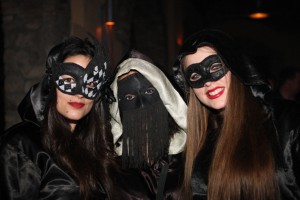 The Bourboulia
The Bourboulia
The Bourboulia is an exclusive local custom you will not come across anywhere else in Greece. It is considered, moreover, one of the oldest carnival customs, its beginnings dating back to the 19th century, possibly to the time when the Apollon Theatre was built in Patra, in 1872, by the architect Ernst Ziller. The Bourboulia are afternoon dances where the men go undisguised while the women wear dominoes and disguise their identity behind a mask. In this way, they can choose their dancing partner without revealing who they are. The Bourboulia were introduced at a time when there were stricter codes regarding the relations between the sexes; these dances provided a temporary respite to this strictness, giving the people the opportunity to interact without the fear of scandal.
Other games
Apart from the aforementioned, many other activities take place around the city, such as painting, pantomime and theatre trivia competitions, as well as anything the Carnival organizers might come up with. At the same time, some teams participate in the parade with a float they have built themselves, whose theme is relevant to their costume. The participants experience the fascinating magic and the strong emotions associated with a game of joy, fun and pursuit with many surprises, twists and unexpected events.
Source: www.mythicalpeloponnese.gr
Every summer a series of cultural events take place for all, locals and visitors of Xylokastro and Evrostini. Concerts, plays, exhibitions, sport events, are but a few of the happenings during summer. Almost every day, during July and August, there is something to enjoy or take part it.
Source: www.mythicalpeloponnese.gr
Every summer a series of cultural events take place for all, locals and visitors of Corinth. Concerts, plays, exhibitions, sport events, are but a few of the happenings during summer. Almost every day there is something to enjoy or take part it. One of the most important is the two day celebration for Saint Paul (the Apostle), towards the end of June.
Source: www.mythicalpeloponnese.gr
For the town Nemea, the beginning of fall is a celebration! It is the grape harvest! Every year at the beginning of September, a three-day celebration of Nemea’s wine producers, called “Great Days of Nemea” is organized. This event is organized by the Municipality of Nemea and the Nemea Union of Wine Producers and Viticulturists, and presents the wine wealth of the area and “Agiorgitiko”, one of the most famous wine assortments worldwide. For wine lovers, this is a great opportunity to celebrate the new harvest with the producers.
The events of the greatest vineyard of the Balkan Peninsula take place in an area that provides a significant archaeological tradition and it is defined by the wine culture. Here is the land of the wine of Fliasion, which was very popular in the ancient times because of its widespread consumption in the Nemean Games. According to tradition, on the low hill southern of the today’s plain of Nemea, near to the springs of Asopos River, king Arash built a city. This city was located in a blessed location, with the river watering the fertile plain, named Fliasia after the son of God Dionysus, Flias, who reigned here according to mythology. It is believed that it was here where they cultivated the first grapevine and they produced the first wine, the famous wine of Fliasion, rumored to accompany king Agamemnon’s rich feasts in the palace of Mycenae. The old name of Nemea was Ai Giorgis, and after that was named the grape and wine assortment, “Agiorgitiko”, admirable successor of the legendary ancient wine assortment.
The wineries that participate in the events stay open during the festival offering an amazing opportunity for everyone to familiarize themselves with the wine and its production process.
The events are centered around the promotion of the vineyard to visitors, to boost the environmental culture in order to change the way we handle and protect the product and to teach us new environment-friendly methods of cultivation and wine making.
The festival lasts 3 days and includes visits to wineries, wine tasting seminars, tours to vineyards and a series of cultural performances, concerts, exhibitions, workshops, movie nights etc.
Information:
0030 27463 60132 & 0030 27463 60118 (Municipality of Nemea)
Source: www.mythicalpeloponnese.gr
Every summer a series of cultural events take place for all, locals and visitors of Kiato. Concerts, plays, exhibitions, sport events, are but a few of the happenings during summer. Almost every day, from July until August, there is something to enjoy or take part it.
Source: www.mythicalpeloponnese.gr
In 2012 took place the 18th Kalamata International Dance Festival, which is organized every summer by the International Dance Centre. The Festival is a permanent, recognised cultural institution, both in Greece and abroad, and it is one of the Prefecture of Messinia’s most important events.
The Festival has contributed to making Kalamata a point of a attraction for thousands of visitors each year, who have associated the name “Kalamata” with modern dance. Another important fact is that it helps promote Greek choreographers, by making their name known also outside of Greece.
Source: www.mythicalpeloponnese.gr
Every year, on the evening of Easter Sunday at 8.30pm on the western beach of Kalamata, at the old slaughterhouses, the locals revive the tradition of Saitopolemos. This peculiar local custom dates back centuries, during the Turkish occupation, when the Greeks displayed great heroism, as well as resourcefulness, during the battles against the Turks. According to the legend, the Messinians managed to stop the Turkish cavalry by constructing shuttles filled with explosives. The Turks outnumbered them, but the Greeks managed to defeat them with their trick.
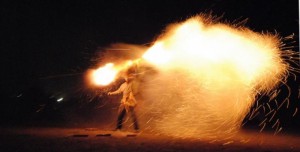 For the Shuttle War, the participants are divided into the so called “mpouloukia” (groups of people), after being properly prepared, by wearing their traditional costumes and armed with the shuttles they themselves constructed by cardboard tubes filled with gunpowder. This tradition is particularly popular among the locals and the visitors during the Holy Week, since it is indeed unique and triggers memories from the glorious struggles of the Greeks.
For the Shuttle War, the participants are divided into the so called “mpouloukia” (groups of people), after being properly prepared, by wearing their traditional costumes and armed with the shuttles they themselves constructed by cardboard tubes filled with gunpowder. This tradition is particularly popular among the locals and the visitors during the Holy Week, since it is indeed unique and triggers memories from the glorious struggles of the Greeks.
Source: www.mythicalpeloponnese.gr
The 13th Peloponnesian Equestrian Games – Show Jumping were successfully conducted in Kalamata in 2012. This is a major equestrian event organized for the 4th consecutive time by the Kalamata Equestrian Club. The games took place in the club’s facilities, which boast the necessary infrastructure to host such an important event.
Athletes from different levels and various equestrian clubs in the Peloponnese participated in the following categories: Junior, for riders between 5 and 6 years old; 0.60 cm obstacle height; 0.80 cm obstacle height; 1 m obstacle height; 1.05 m obstacle height and 1.10 m obstacle height. The equestrian games are well established as a tradition for the city of Kalamata, offering an exciting spectacle and simultaneously promoting the equestrian sport. Admission is free for all spectators.
Source: www.mythicalpeloponnese.gr

